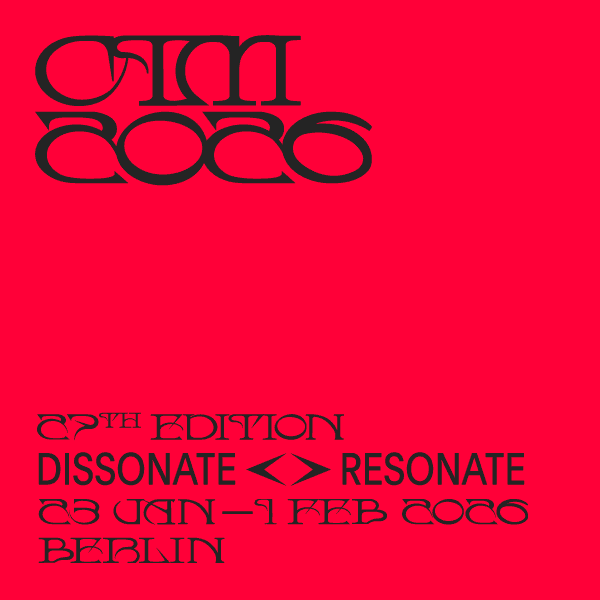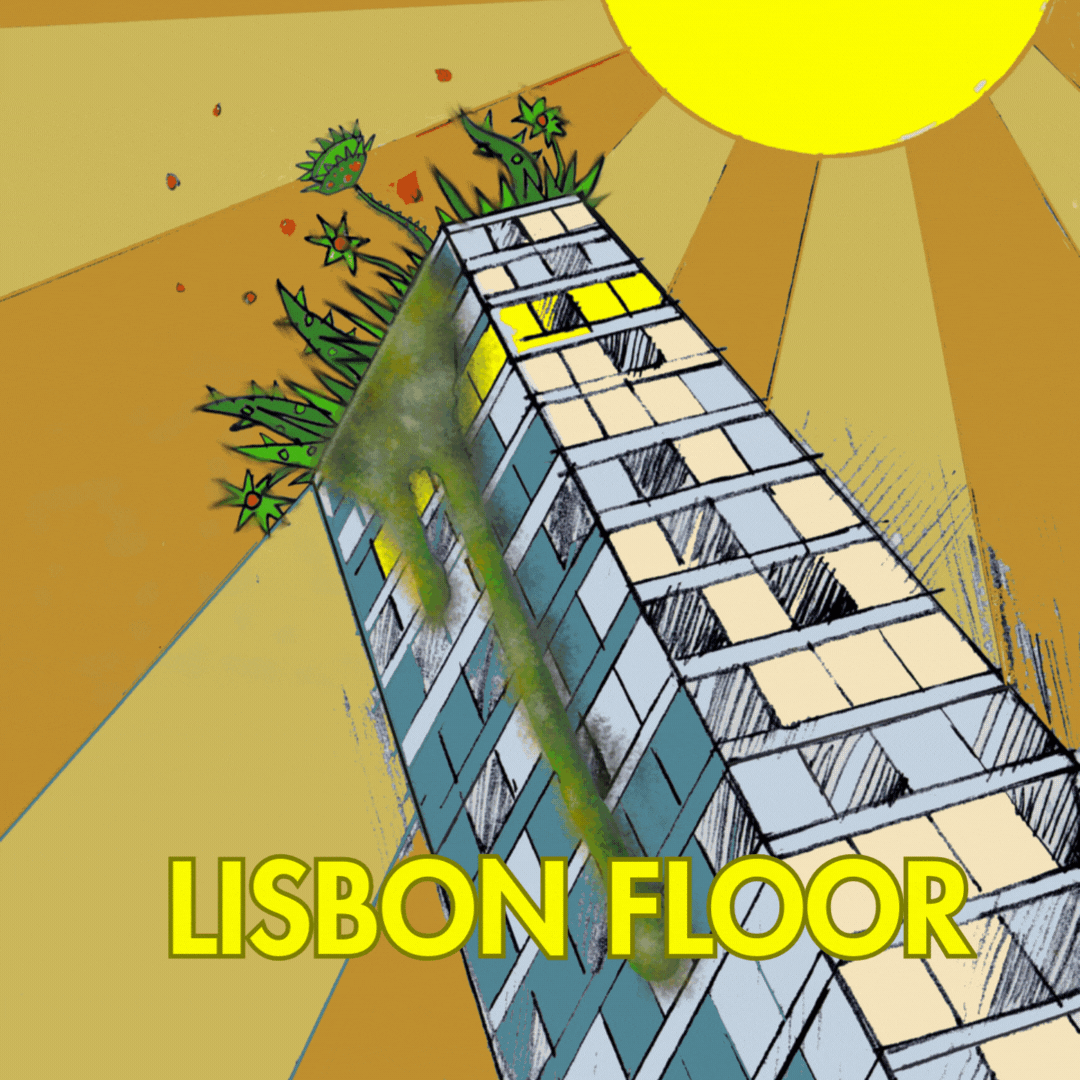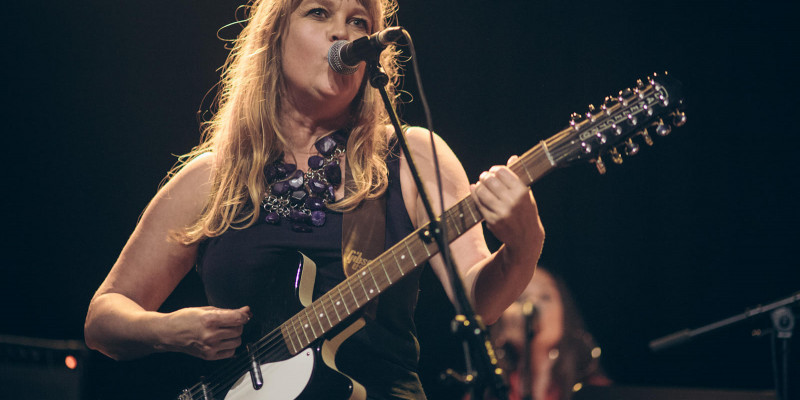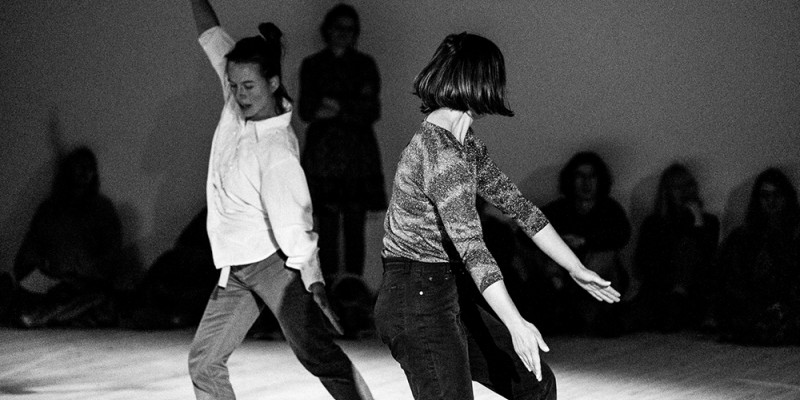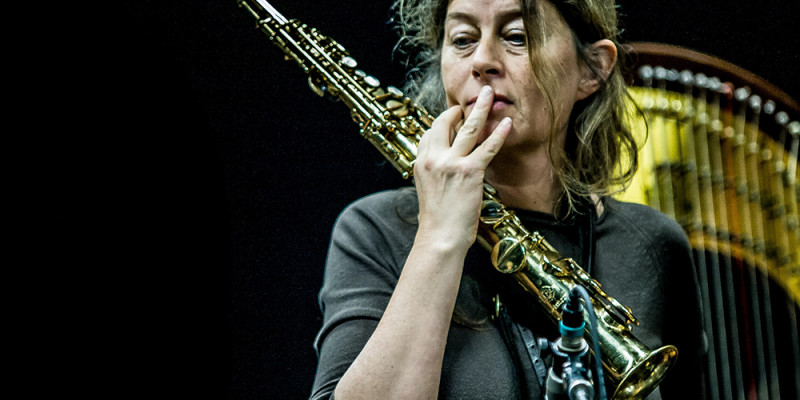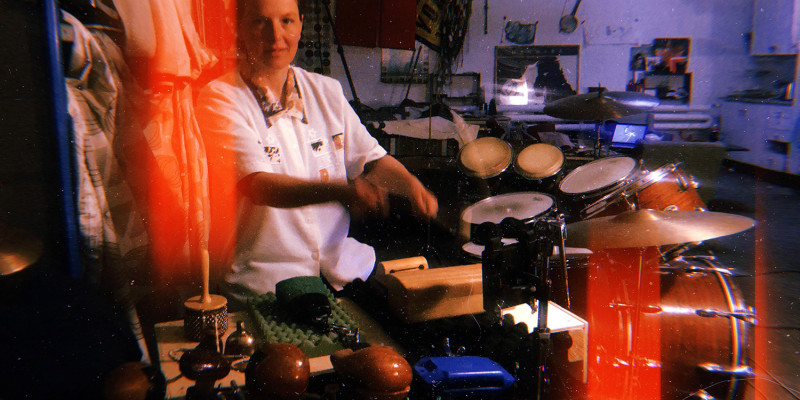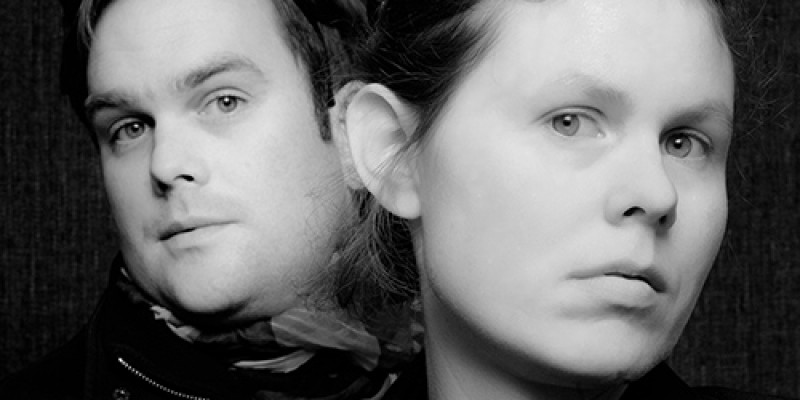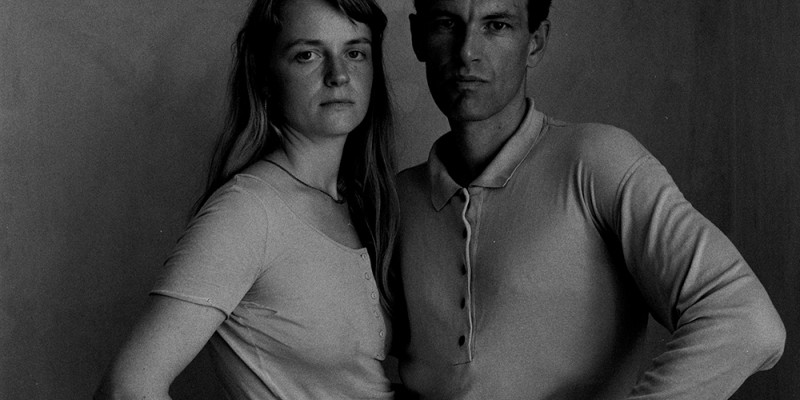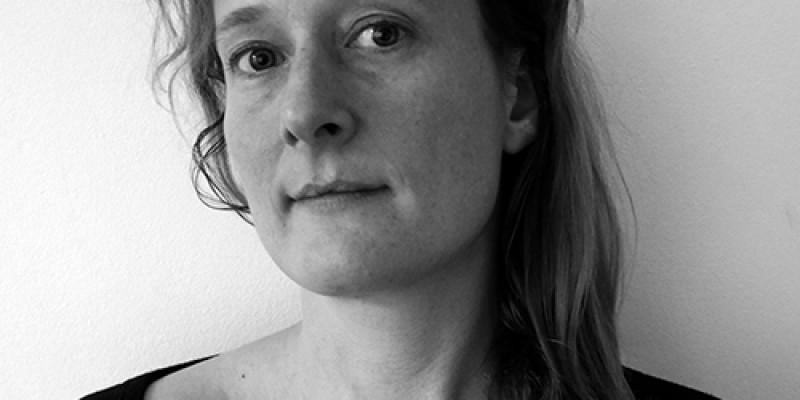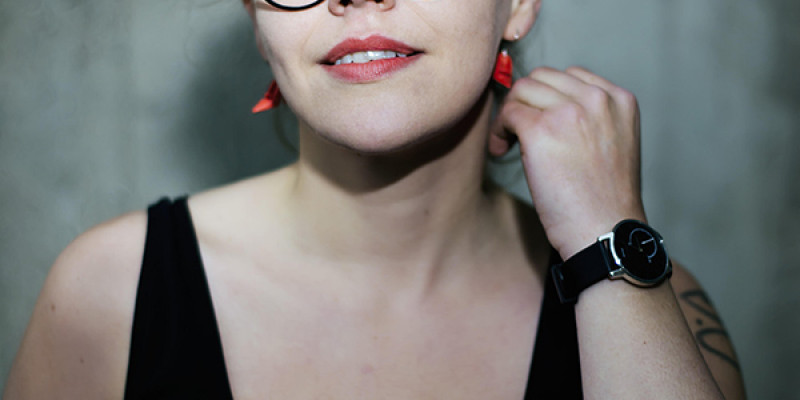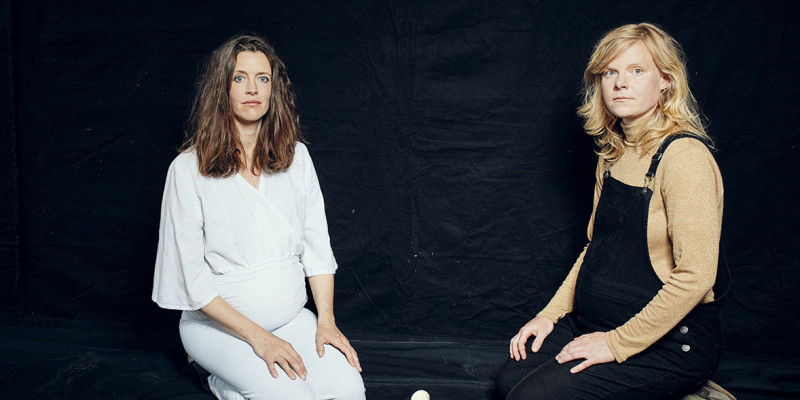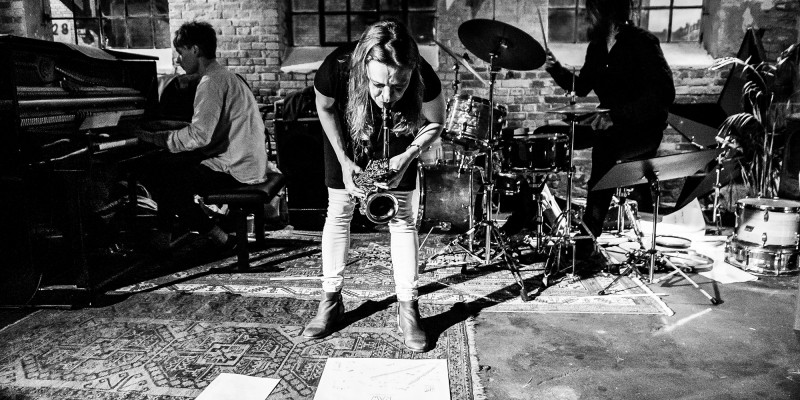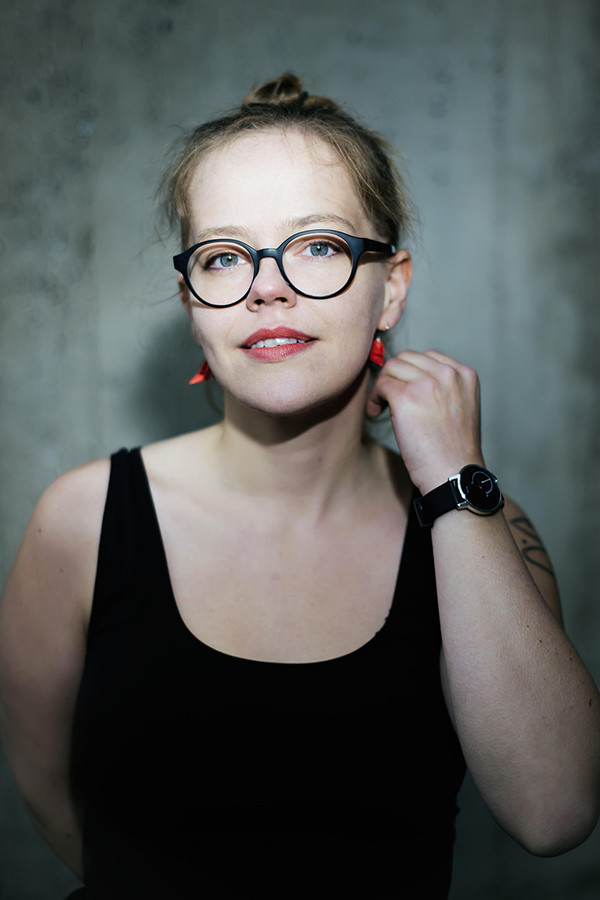
»Had I run around with the others, would I have become a composer at all?«
About the workplace:
Over the past year, I have thought a lot about what the physical space means for my work. My boyfriend usually leaves for work Monday through Friday, and then I have the whole apartment to myself.
Sometimes I sit in the study at my desk with the electric piano to my left. In front of me hangs a bulletin board with detached notes I have written on small notes and hung up between postcards and other small items. To the right is the filing cabinet with paper, sheet music and old notes.
Other times, it seems like the workplace is full of expectations I can not live up to: here I have to be a diligent, focused person who does what she sets out to do. So I sit down in the living room instead. Sitting at the dining table or in the armchair and looking out the window. If not I'm just doing something completely different – there's always something practical you can fix instead. Laundry, dishes, shopping. Later I go back to the study again.
Silence is like a complex machine noise, but played by all instruments at once
I usually start analog. Paper and pencil. I have drawn a series of spirals in my notebook, it is for a clarinet piece. I draw the last spiral on a piece of graph paper, make a scale along the y-axis and note values along the x-axis. I have not worked this way before, but I feel like giving myself some new tones to work with. I follow the spiral around and write down the notes. Pretty quickly I open Sibelius and type the notes in there instead. It gives me an overview of how the shape can be. I print it out and start writing notes, notes and small drawings in the gaps between the notes. It's just a skeleton, it's going to change a lot. I find my Zoom recording that I made for the rehearsal I had with the clarinetist. I listen through the entire file, write notes with time codes on a piece of paper, and later return and listen to parts of the recording as I write.
»so let's each take our own pot of coffee and close the door between us«
I often get restless when I try to translate my ideas into notes and instructions. I get impatient with myself and think everything looks silly and clichéd on paper. When the idea is in your head, it's still amazing, but like written down notes, it suddenly looks like everything else. It can feel like a physical discomfort I have to bite into myself to write anyway. In between, I have to go my way, maybe just into the other room and then return again later. I check the notes on the piano, try something else, try again, maybe sing a little, look at the paper, at the screen, rub my temples, stare at the paper – that was not what I was thinking - try again. Sometimes I manage to bite the discomfort in me and keep going, other times I throw it all out and start all over again. It is not always to know if it really is some shit or if it is just too early in the process to assess it.
For over a year we have now been two about sharing the space in the apartment. The most annoying thing about not having a steady job is that I can not walk away from it. I am now most often in the living room – sometimes we move the piano in here. It is important for me to be alone when trying to put notes on paper.
If there is someone else in the room, I feel his eyes on me, feeling my own inadequacy extra strongly. Even though he does not really care about my unrest because he's busy with his own.
So I learned to say, »Today I have to use the piano, and I want to be alone, so let's each take our own pot of coffee and close the door between us.« It has taken me about half a year to learn, because I am extremely conflict-shy, even when there is no actual conflict in sight.
I am slowly becoming more aware of my process. Last year I finished writing a piece, handed it to the string quartet that was to play it, and afterwards went and wondered how bad it might be and whether the musicians would refuse to perform it because of its poor quality. »But isn't that how you always feel?« asked my boyfriend. Yes it is. So I practice living with those thoughts and reminding myself that the last time I felt that way, I liked the piece again as soon as I heard it being played.
About the body:
My work is shaped by my story of who I am. The body I was born with is without a doubt a big part of it. I do not know what experiences I would have had if I had grown up as a boy. I also do not know what inner world I would have had if I had not had asthma or seen twice until I was 10. My strongest early memory that has to do with sound is that I lie in bed and listen to the silence. Objects grow bigger and bigger and get too close, then suddenly become smaller and smaller and move far, far away. It's somehow connected to silence, and it's scary. Silence is like a complex machine noise, but played by all instruments at once. It's violent. Scary, but also fat. Especially as I discover that only I can hear it. And then I sing to the sound – that also makes it less creepy.
That experience has helped shape my aesthetics. Sometimes I try to translate the sound into music.
The first time I tried to do that was in a piece for recorder and strings that was never performed. The recorder represented the child lying and singing while the strings were the space around it. The strings lay like a big cloud, somewhat Ligeti-inspired, and when the recorder began to play, the strings gradually moved their pattern towards its tones. When the recorder stopped again, they slipped like a slow elastic back to the starting point.
I have made the attempt to translate several times since. But even when I do not, I have a great predilection for the friction in the small dissonances. In the string quartet Performance of a frozen moment, which I wrote last year, I work with longer and longer formats, where the four instruments stand and pulsate between different timbres and quarter-tone distances. It is an attempt to take the listener into the world that can open up there.
Maybe it does not sound like the memory and my translation attempts have so much to do with the body. But the objects that changed size were probably the result of the eyes relaxing after a full day of exertion. The noisy silence was perhaps a variant of the whirring in the ears that may accompany a headache exertion. I sought refuge in my inner world with books and music because the body was unreasonably difficult to deal with. I sat alone and sang to the sound of the machines. Had I run around with the others, would I have become a composer at all? It's impossible for me to dissociate these things.
Copenhagen, June 2021.
English translation: Andreo Michaelo Mielczarek
